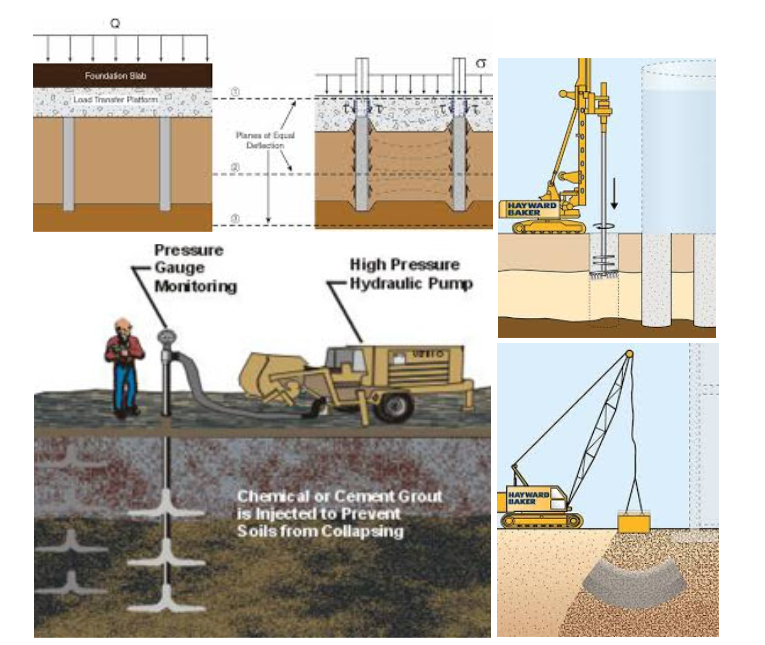Skinning the “Bad Fill” Cat
Good building sites have become somewhat rare as more and more projects involve redevelopment or re-tasking of existing sites either incumbered by existing buildings or impacted by contaminated soil and/or groundwater from previous site activities. In many cases, sites contain loose soils, buried demolition debris, or other less-than-desirable materials that are not reliable to support buildings or pavements. A good term to encompass these conditions is uncontrolled fill. In some instances, traditional excavation and replacement of uncontrolled fill materials is the best choice; however, in many cases, the cost of excavation and replacement can kill the deal for the project.
From a geotechnical engineering standpoint, the unpredictable behavior of materials provides the main concern regarding uncontrolled fill. In other words: how much will the uncontrolled fill subside under the weight of additional fill? how much will foundation settle? how much will pavement subside and crack due to the subsidence of uncontrolled fill materials?
Debris-laden soils, or soil-laden debris, unfortunately defy characterization to a recalcitrant level and substantiate the need to change the site conditions. The proper change in site conditions can achieve some level of predictable stress-strain behavior to facilitate the design of foundations, floors, pavements, etc.
Several ways to skin the “Bad Fill” cat offer an alternative to traditional excavation and replacement. In some cases, partial excavation and replacement (not chasing all the uncontrolled fill) sufficiently improve site conditions to allow construction. In other cases, dynamic compaction may provide a reasonable and cost-efficient approach to improve and derandomize the stress-strain behavior of uncontrolled fill. As another option, installing aggregate piers through the fill and then installing a load transfer platform may improve or simply help define the stress-strain behavior of uncontrolled fill to support the new construction. Other methods to manage uncontrolled fill include grouting and soil mixing.

The optimal application of the above methods depends on the site conditions and limitations the new construction imposes (buildings, roads, tanks, industrial equipment, park hardscapes, etc.) as well as environmental concerns, schedule, and cost. With some thought and the support of a client open to embracing creative solutions, you can tame the "Bad Fill" cat without your project losing its momentum.
